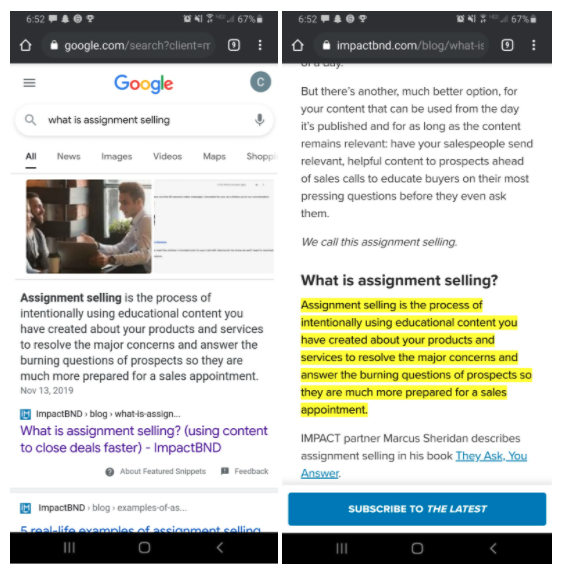Subscribe now and get the latest podcast releases delivered straight to your inbox.
How Google's new AI-powered search updates will impact SEO strategy

Nov 7, 2020

Due to the most recent advancements in AI, Google will be releasing new search updates in an effort to help people find exactly what they’re looking for.
Google’s Senior Vice President, Prabhakar Raghavan, mentioned in the update that the advancements in AI have allowed Google to better organize all of the information available on the internet and make it universally accessible and useful to users.
🔎 Related: Google image search removes 'labeled for reuse' badge
As the buying behaviors for consumers continue to evolve, Google has implemented new search updates that reflect those changes. More specifically, Google users will be able to become more educated around the topic, product, or service they’re searching for with these updates.
So, let’s dig into the new updates being released for search and see if they will have any impact on your brand’s SEO efforts.
1. Improved spelling recommendations
As humans, we know the likelihood of spelling errors is high. Whether it’s while searching Google or in a conversation with coworkers.
Which is why Google has continued to improve its ability to understand misspelled words. Especially when one in 10 search queries every day are misspelled. Whether it’s due to auto-correct or “fat” fingers, spelling your query right can help provide you with the most accurate search results.
Google introduced a new spelling algorithm not only to help understand the context behind misspelled words but so that they can help you find the right results as quickly as possible.
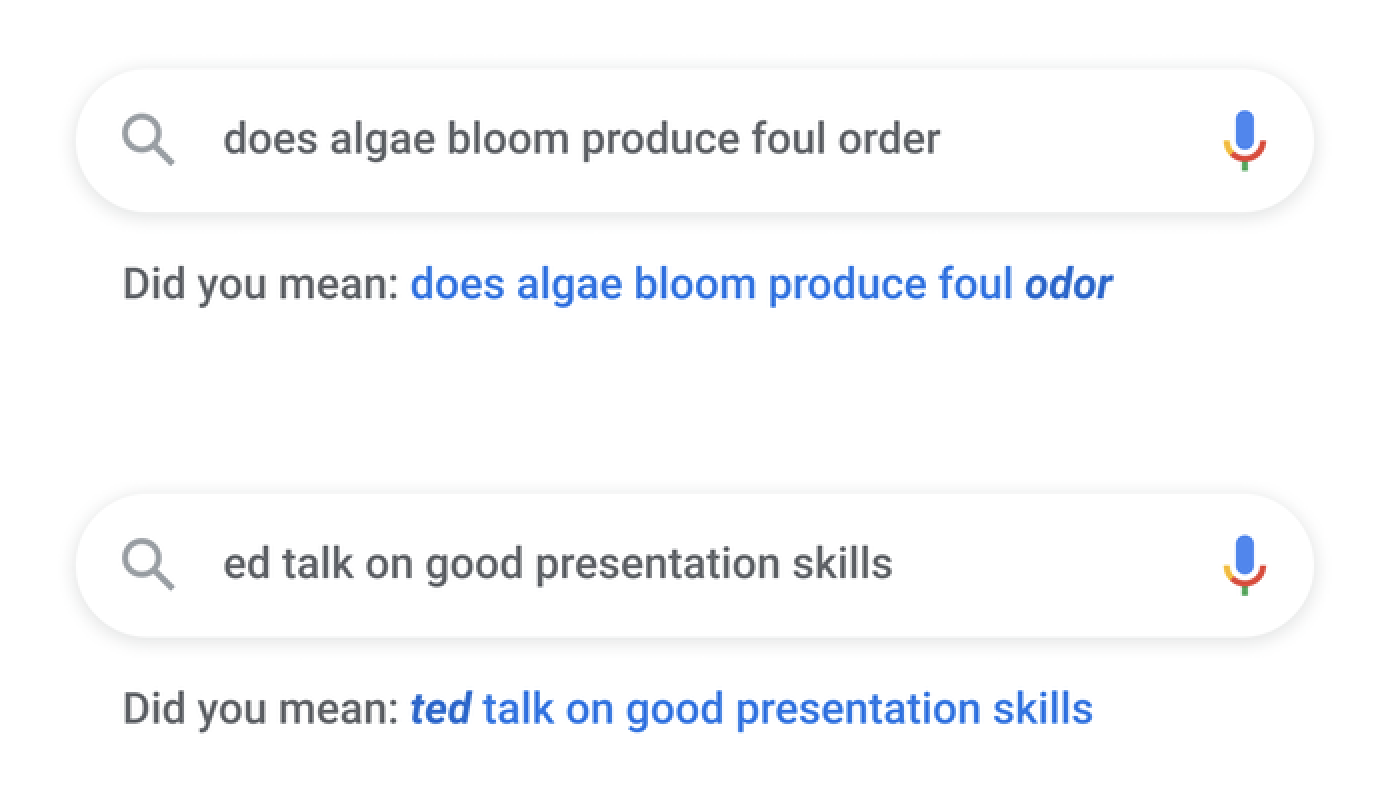
Photo Credit: Google
This is also the biggest improvement the platform has made in regard to spelling in the last five years.
2. Identifying key passages of text
Oftentimes finding very specific information on a site in relation to a user’s search query was something Google had struggled with in the past. Especially, when you had a long or very specific query.
With this newest update, Google’s search algorithm will now be able to index specific passages within a web page that relates to your question.
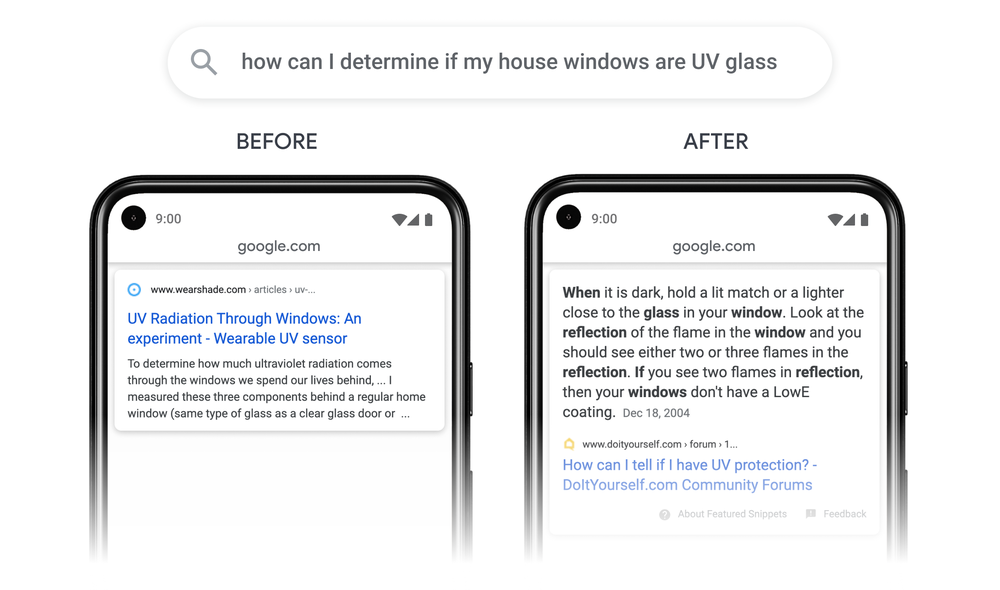
Photo Credit: Google
In recent queries, you may have noticed upon clicking on a search result, Google brought you directly to the passage, and even highlighting it in yellow.
An example might be, what is assignment selling? Here’s a look at the featured snippet and passage that pops up from our website.
While this won’t have a huge impact on SEO, remember to create content that answers the questions your audience is asking.
Another consideration could be in the placement of your CTAs. With Google bringing visitors directly to a relevant passage, consider moving your CTA to more appropriate sections of your content.
It’s also important to note that, currently, this update appears to only be functioning on mobile devices.
3. Utilizing subtopics in search queries
By the end of 2020, Google will be implementing subtopics to help users narrow down their search results. While it’s still unclear how they will appear, it looks like Google will allow users to sift through search results by implementing clickable options.
🔎 Related: In the world of search, what is intent data?
This could be extremely important for SEO if you’re trying to target a broader keyword. A great example of this is when people search for jaguar. Are they looking for the car, the animal, or even the football team?
Google is hoping that the release of this feature will allow them to better deliver a wide variety of content, and then allowing you to filter those results based on what you’re really looking for.
4. Video chapters and highlights
There’s nothing worse than having to sift through a video looking for the exact scene or moment you’re looking for. Back in May, YouTube rolled out video chapters, allowing creators to add in descriptions relating to each segment of their videos through the use of timestamps:
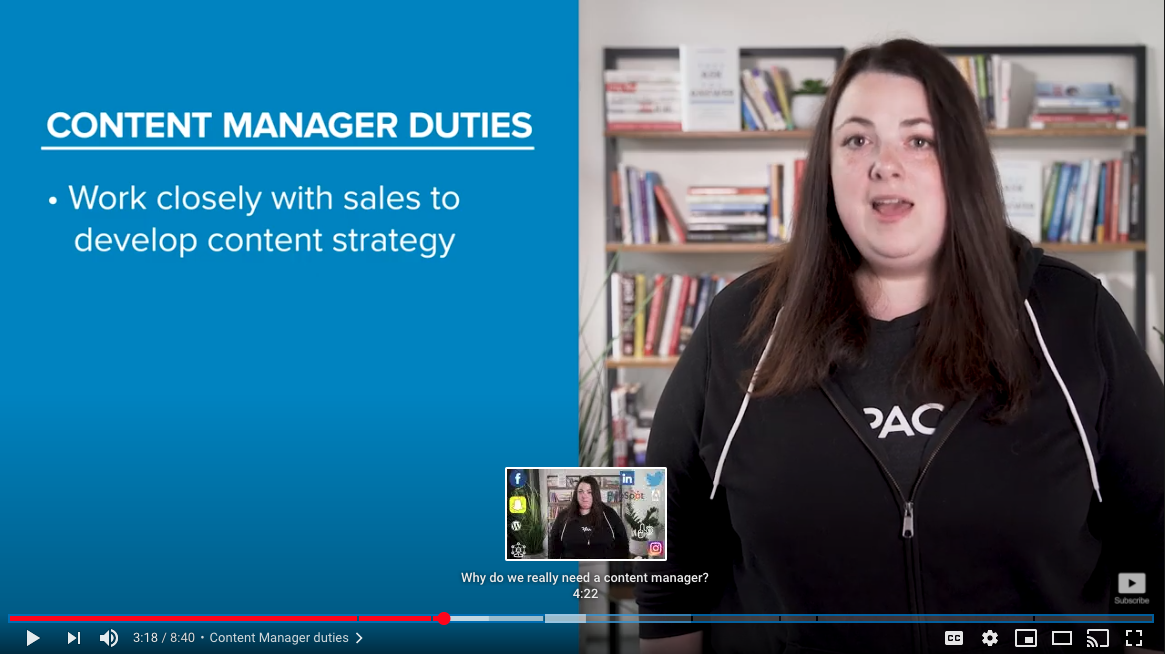
Here's an example from our video on why you need a content manager for your digital marketing team.
If you added descriptions to the various chapters of each of your videos, Google will now be able to provide users with more context as it relates to the content in each chapter of the video.
With all that being said, upon someone searching for something specific in a video, Google will be able to bring users to the exact chapter of a video they’re looking for. An example Google showed is finding the highlights from the World Series Game 5 between Yankees and Rays.
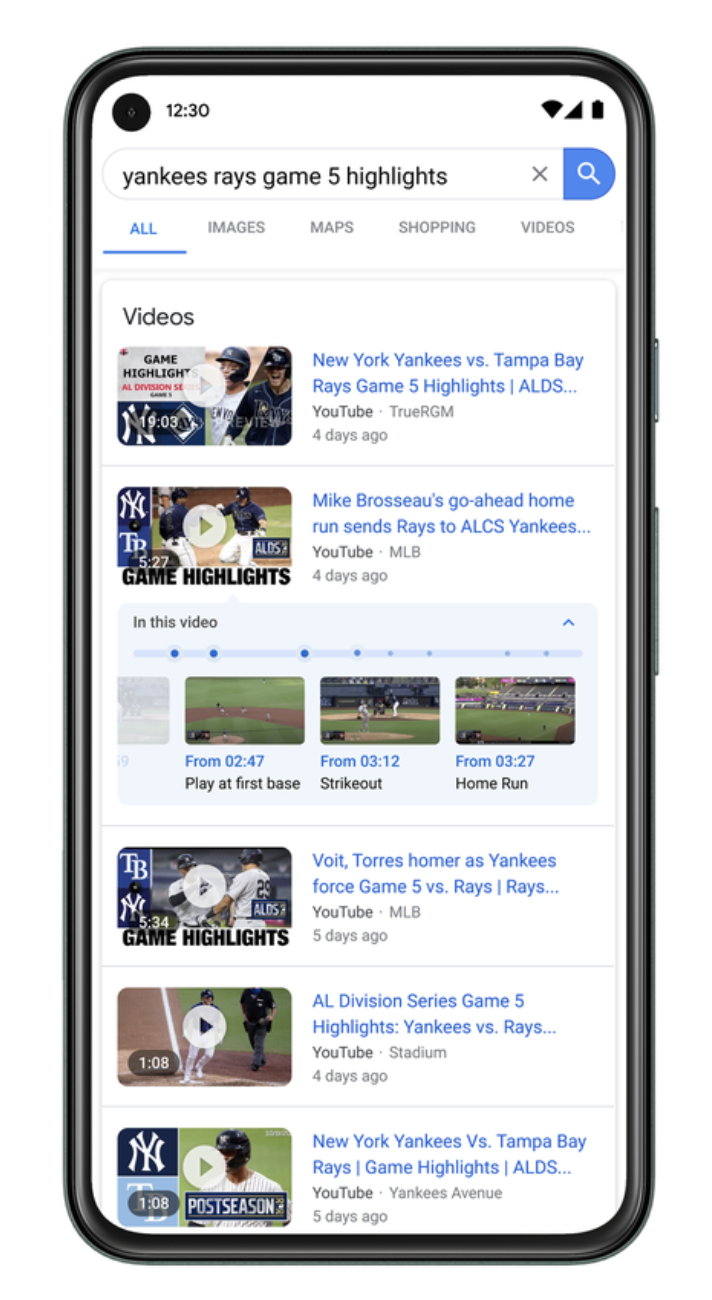
Photo Credit: Google
5. Accessing important information during COVID-19
The COVID-19 pandemic has already had a lasting impact on how buyers research and buy. Which has played a factor in several of Google’s new improvements that allow users to get errands done more safely and efficiently especially.
🔎 Related: Browse all of our COVID-19 analysis and insights
One of the biggest features within this section that they’ve implemented is their live busyness updates, which help users identify how busy a place is right now. You can find this information within the store, restaurant, or company’s Google My Business page.
Here’s an example from my local Target!
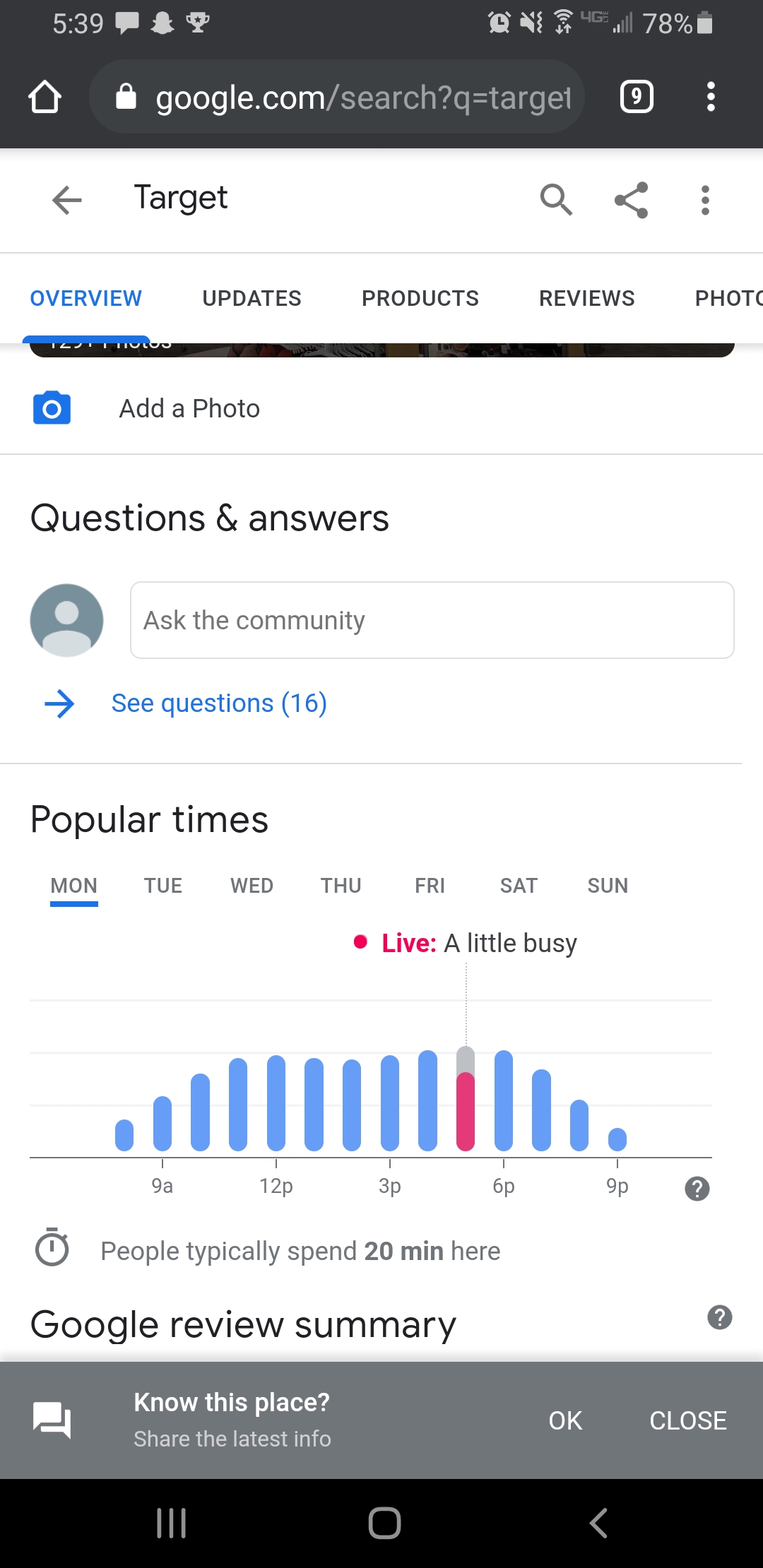
According to their live busyness update, now probably isn’t the best time to stock up on more toilet paper or coffee.
Google has also added COVID-19 safety information front and center on your business profile. Allowing you to share the most important information regarding your business’s safety protocols as well as any additional information visitors should know prior to visiting your business.
🔎 Related: Health and safety measures added to Google My Business pages
Here’s an example of what Disney World has included on their page, linking visitors directly to their COVID guidelines on their website:
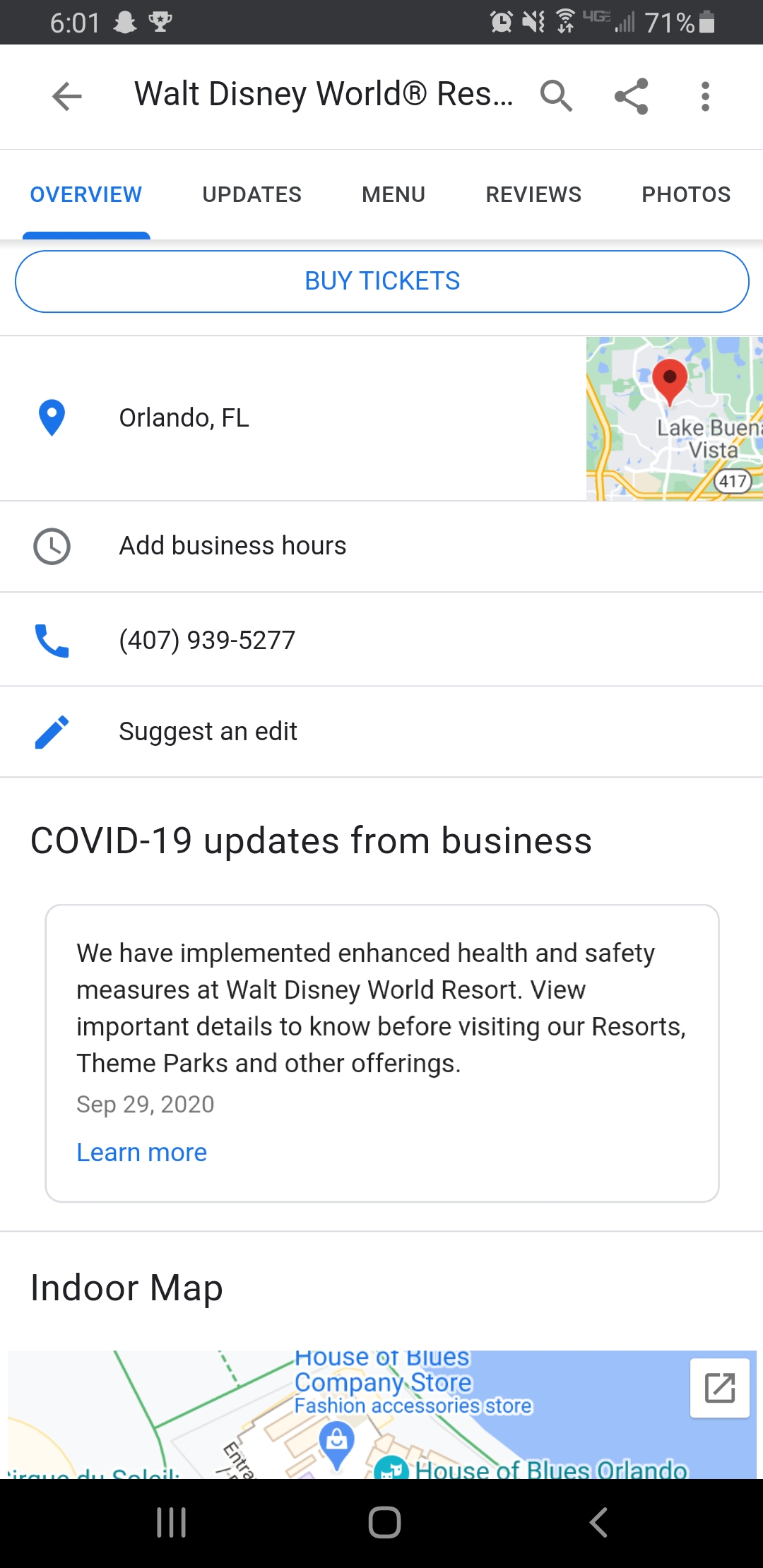
How should your SEO strategy adapt to these changes?
While many of the changes Google implemented were put in place to improve the experience of their users, and they might not have an overwhelming impact on your SEO efforts, there are still some changes mentioned that could be affected.
Particularly when it comes to subtopics and ranking in passages.
Through the use of subtopics, it might make it even more difficult for brands to rank for broad high traffic keywords. In the same breath, it can be seen as a benefit to those already optimizing their content for specific subtopics.
🔎 Related: How to completely optimize your Google My Business listing
Continue to create content that answers your audience’s questions. As I mentioned above, when it comes to having your content highlighted in passages, make sure your content, whether it’s blog articles or website pages, is answering your audience’s questions as best as possible.
This will allow Google’s algorithm to index individual passages of text to locate the specific answer to questions. You’ll also want to be cognizant of where your calls-to-action (CTAs) are placed within your content.
With passages that bring visitors directly to the answer to their question, they will be less likely to scroll through your entire article. It’s important to note that CTA placement might vary depending on the content and where you answered their question.
As many of these changes come into effect, don’t forget to watch your rankings and search results to see if there are major shifts, whether it’s for the good or bad and use that information to make changes to your content and SEO strategy.
Free: Assessment
